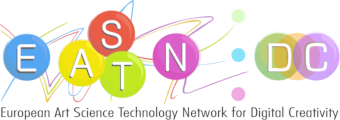This paper investigates the informal practices of digital artists that are referring to the rejection of their artworks and the fragmented mnemonic spaces that these practices generate in the digital realm.
In particular, we consider four different practices: the physical death, the ritual destruction, the self-destruction and reincarnation. The physical death of the artwork implies one of the most radical practices of the artists: the choice not to act. The artwork is left in the digital universe to survive according to the laws of digital selection. The ritual destruction refers to the actual destruction of a digital artwork, by ritually deleting it in the context of an artistic practice. The self-destruction of the artwork is a practice that involves the creation stage, where the artwork itself is programmed to die. The last practice of reincarnation points out in a metaphysical way the circularity of life, allowing the essence of the work to travel into transcendent immaterialities.
In order to explore the properties of these practices of rejection and the fragmented mnemonic spaces generated, the study draws analogies to Roland Barthes’ A Lovers Discourse: Fragments. In this framework, we conceptualise the digital artist as the amorous subject, and his practices as the practices of exhaustion. The digital artist in order to survive - meaning to keep creating new art - needs to forget: the digital art object is regarded as an object of desire that is rejected acquiring an alternative tempo - spatial existence. The paper results in the construction of a fragmented digital artist’s discourse, stretching the concept of memory in the art preservation field.
Back
“Reflections: Bridges between Technology and Culture, Physical and Virtual”
is supported by:






